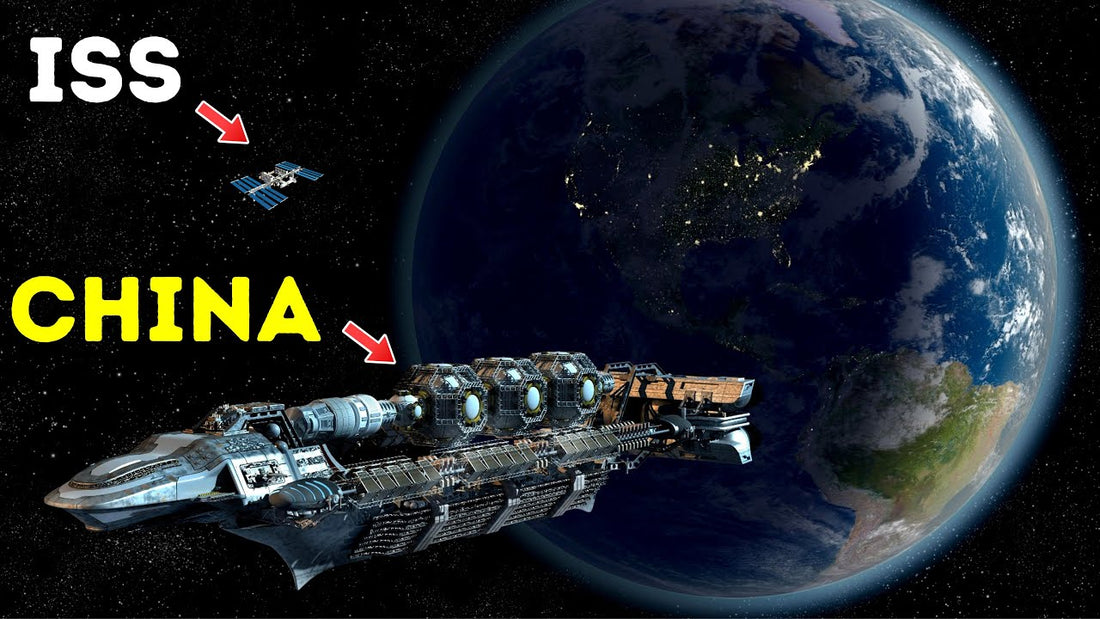
Feasible or Fiction: "China's Plan for Kilometre Long Spacecraft
Share
The Chinese space programme has once again captured attention, this time with its proposal to investigate the construction of a large spacecraft, at least one kilometre in length.
To put this into perspective, the International Space Station (ISS) measures just 109 metres across, yet it incurred a cost of $150 billion and necessitated thirty missions spanning a decade to build. China's proposal envisions a spacecraft ten times the size of the ISS. While it may seem ambitious, it would be unwise to dismiss it prematurely.
"It's about ambition, long-term thinking, and instilling a sense of purpose. Such long-haul thinking does not align well with shorter-term Western perspectives, which might mistakenly perceive this as propaganda," explains space writer Brian Harvey, author of the book "China in Space: The Great Leap Forward."
China has made substantial strides in space exploration recently. It has successfully returned lunar rock samples to Earth for analysis, becoming the third country, following the USA and Russia, to achieve this feat. Additionally, China has landed a rover on Mars, a milestone previously attained only by the USA. Furthermore, it achieved the world's first landing on the lunar far side. In addition to these accomplishments, China is currently constructing the Tiangong space station, which was inhabited for 90 days this year and is designed to eventually rival the ISS.
Considering the future, Harvey references a Chinese report published in 2009, titled "Roadmap 2050," which outlines China's plans to become the world's leading spacefaring nation by the middle of the century. "The horizon for Chinese spaceflight spans not years or decades but half-centuries," he notes.
In other words, this latest announcement signifies the beginning of China's contemplation of how to build such a spacecraft in the future, rather than a declaration of immediate construction.
The idea emerged as part of a broader call for research proposals from the National Science Foundation of China, a funding agency overseen by the country's Ministry of Science and Technology. The agency has allocated AU $3,240,192.97 for a five-year feasibility study focusing on new, lightweight designs, materials, and space construction techniques.
Why would China desire a spacecraft ten times larger than anything previously constructed? The answer could be artificial gravity. A space station featuring artificial gravity could help mitigate some of the detrimental effects of weightlessness, such as muscle atrophy and bone density loss.
For extended spaceflights to destinations like Mars, artificial gravity could significantly impact the well-being of astronauts.
"Artificial gravity has been this 'science-fictiony' holy grail for human spaceflight for a century, and the primary way to achieve it is through a large spinning structure," says Zachary Manchester, an assistant professor at the robotics institute of Carnegie Mellon University, Pennsylvania.
Inside a spinning structure, centrifugal force generates an outward motion, creating a force that simulates gravity when the structure rotates at the appropriate rate.
However, humans are highly sensitive to rotation rates. Rotating faster than a couple of revolutions per minute can induce motion sickness in the average person.
Nevertheless, experiments have demonstrated that these effects largely disappear at rotation rates of one to two revolutions per minute. To create Earth's gravity through such gentle rotation, a spacecraft would need to be approximately one kilometre in diameter.
China seems to be considering how to build such a spacecraft in the future, rather than an immediate construction plan. They will explore new, lightweight designs, materials, and space construction techniques in a five-year study.
While China explores building a large spacecraft in orbit, researchers like Zachary Manchester are studying the possibility of creating such a structure that can fold into the nose cone of a single large rocket, like a SpaceX Falcon Heavy. Mechanical meta-materials, which employ scissor-like joints to fold down to a fraction of their deployed size, are crucial to this concept. These structures can expand to hundreds of times their original size, offering a potential solution to building massive space stations.
In conclusion, it's evident that major spacefaring nations are looking forward to creating spacecraft much larger than any constructed to date, although whether these designs will prove viable remains to be seen.
You’ve come this far…
Why not venture a little further into A.S.S. - our exclusive Australian Space Society.
And keep thrusting Australia into the deep unknown…
#Space_Aus




